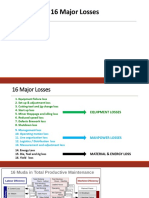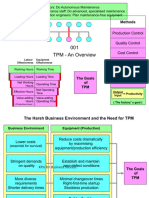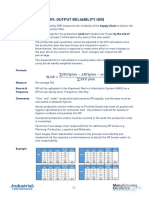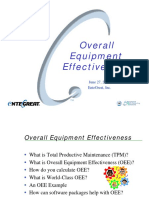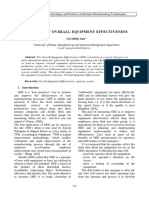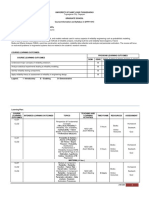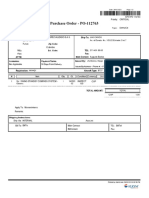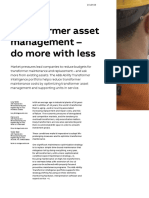100% found this document useful (1 vote)
393 views9 pagesImprove OEE for Manufacturing Success
This document provides a roadmap for manufacturers to improve their Overall Equipment Effectiveness (OEE) performance. It discusses how OEE can be used to establish performance baselines, stabilize production, and improve quality. The roadmap involves starting OEE measurement at the machine level and scaling up to production lines and plants. Tracking OEE in real-time helps predict equipment issues and reduce downtime. Following the roadmap of setting organizational goals and linking OEE gains to business outcomes can help manufacturers maximize the benefits of improved OEE performance.
Uploaded by
Muhammad Usman HaidarCopyright
© © All Rights Reserved
We take content rights seriously. If you suspect this is your content, claim it here.
Available Formats
Download as PDF, TXT or read online on Scribd
100% found this document useful (1 vote)
393 views9 pagesImprove OEE for Manufacturing Success
This document provides a roadmap for manufacturers to improve their Overall Equipment Effectiveness (OEE) performance. It discusses how OEE can be used to establish performance baselines, stabilize production, and improve quality. The roadmap involves starting OEE measurement at the machine level and scaling up to production lines and plants. Tracking OEE in real-time helps predict equipment issues and reduce downtime. Following the roadmap of setting organizational goals and linking OEE gains to business outcomes can help manufacturers maximize the benefits of improved OEE performance.
Uploaded by
Muhammad Usman HaidarCopyright
© © All Rights Reserved
We take content rights seriously. If you suspect this is your content, claim it here.
Available Formats
Download as PDF, TXT or read online on Scribd
/ 9









